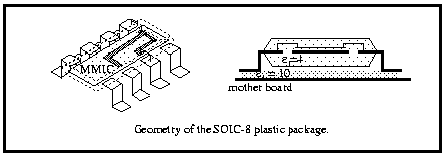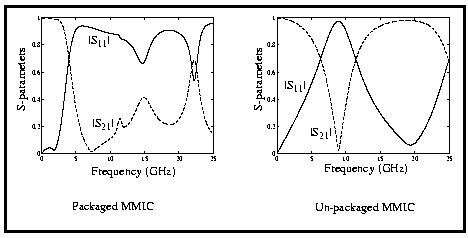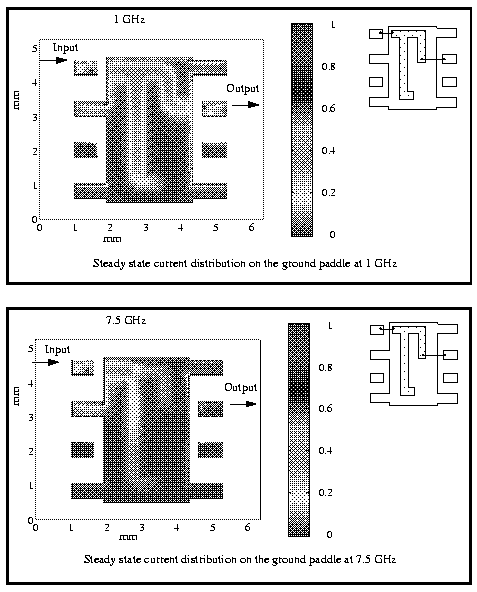
The increase in clock rate and integration density in modern IC technology leads the designer to deal with problems for which traditional lumped circuit design methodology fails to accurately account for the complex interactions between different parts of the circuit. Problems such as dis persion, crosstalk and package effects require a full electromagnetic approach in order to predict their impact on the final configuration. A typical problem is the characterization of a MMIC once it is mounted in a package. The presence of leads, bond wires and grounding pins affects the MMIC behavior. These effects must be included in the early design stages. In order to avoid costly design cycles, an electromagnetic approach becomes attractive to predict accurately the performances of a packaged circuit. Promising results have been obtained with the use of full wave methods . Among the numerical techniques available, the Transmission Line Matrix (TLM) method is particularly suitable to analyze such complex geometries because of its flexibility and accuracy. In addition it allows a transient analysis of the component, of particular importance in the presence of digital signals and non linear elements.

![]() Java wire frame model (thru connection with an open circuited stub as MMIC circuit)
Java wire frame model (thru connection with an open circuited stub as MMIC circuit)
![]() Java wire frame model (microstrip spiral inductor as MMIC circuit)
Java wire frame model (microstrip spiral inductor as MMIC circuit)
![]() Virtual reality model (spiral inductor as MMIC circuit): you can walk into the structure!! (best seen with Live3D plugin for Netscape)
Virtual reality model (spiral inductor as MMIC circuit): you can walk into the structure!! (best seen with Live3D plugin for Netscape)
Packaging effects are clearly shown if we compare the scattering parameters of the MMIC alone with those of the packaged MMIC. For the configuration in the above figure, the following results have been obtained.


Mario Righi, Giampaolo Tardioli, Lucia Cascio, 7 February 1997.